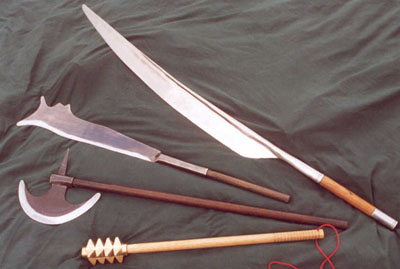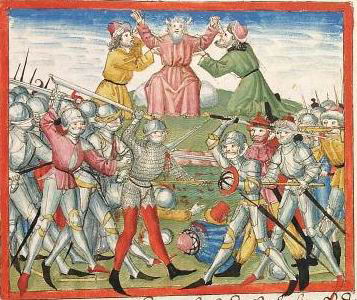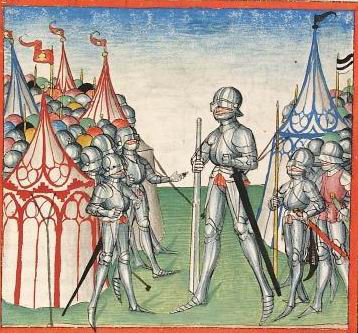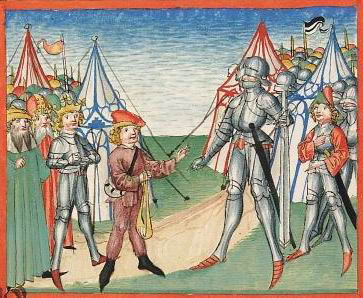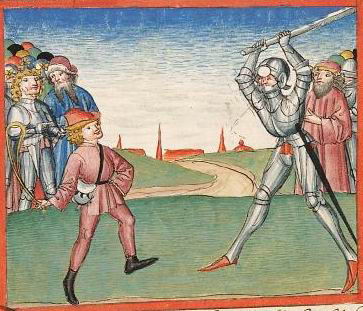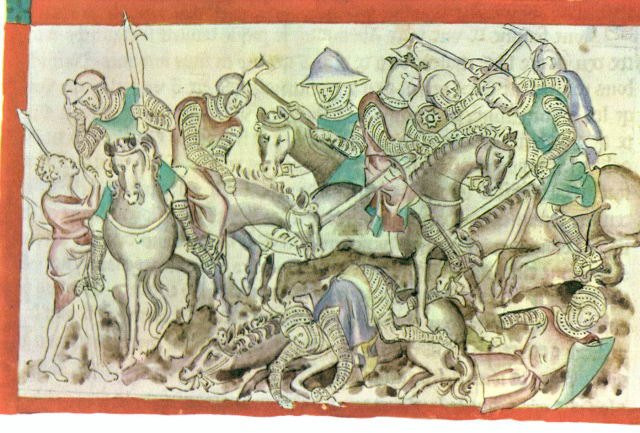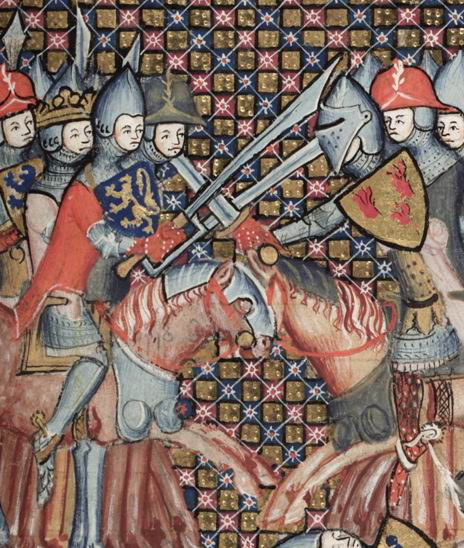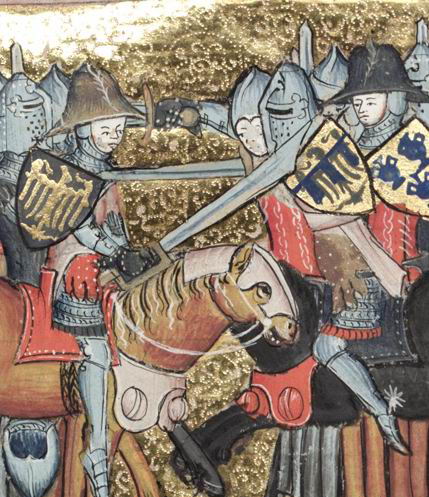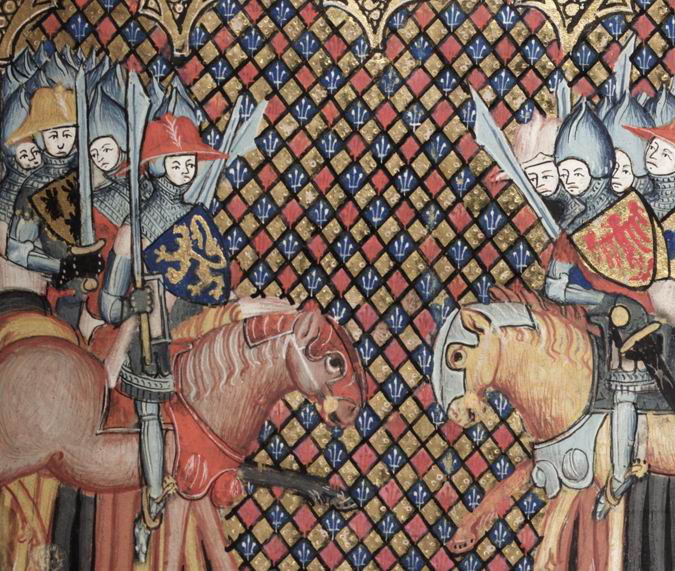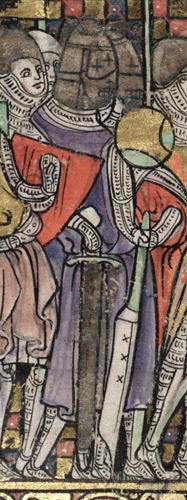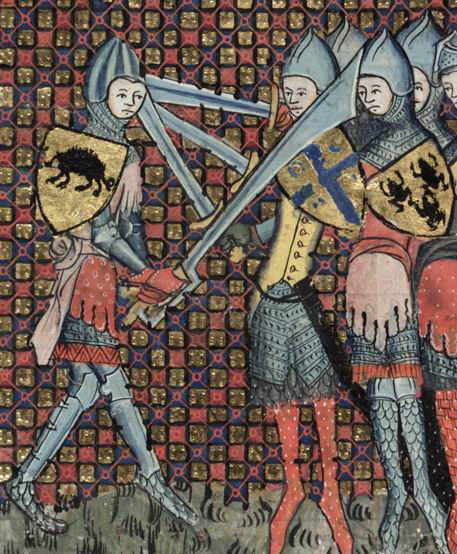I thought I had succesfully posted this before-- seems not :\ Well, here goes again!
The illuminations of the Maciejowski Bible often depict a two-handed cutting weapon that is sometimes referred to as a “glaive” or fouchard. I have attached a detail from Leaf 10 of said Bible illustrating the capture of Hai (or Ai). The detail shows a knight who has, more or less, cut his opponent in two with this weapon—through maille, at that! Given that there may be some exaggeration of the weapon’s capabilities, it still looks quite formidable.
Is the term “glaive” an accurate one? I ask because the glaive I am familiar with is a long-hafted pole arm rather than the beast shown here. Impressive as it is, I’m surprised we haven’t seen more reproductions on the market—Manning Imperial is the only one I’ve seen that’s offering it.
Can anyone give me more info on this weapon? Has anyone seen it in a museum or private collection (an original)? Handled it? If so, what does it feel like… I think you get the direction I’m going in here. Any info would be appreciated.
Thanks,
David
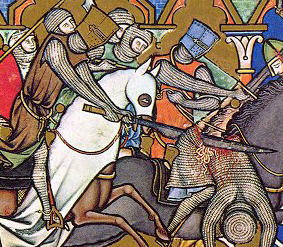
The Capture of Ai
